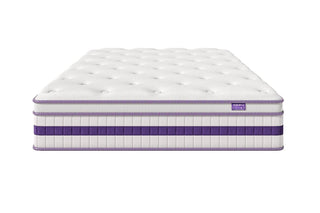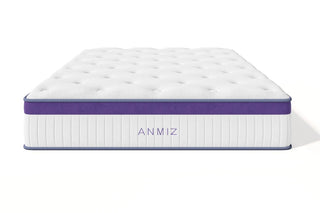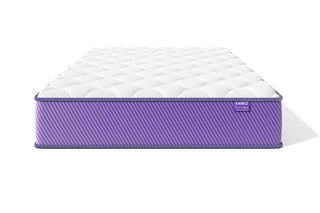A mattress is more than just a place to rest; it’s a critical component of your overall health and well-being. While Palmpring Organic Mattress promises eco-friendly luxury and health-conscious design, does it deliver true comfort, or is there a hidden price to pay for its natural materials? Let’s break it down.
What is Palmpring Organic Mattress?
Palmpring is a California-based company that specializes in organic mattresses made from natural latex, palm coir, and organic cotton. With models like Colva, Puri, Ellora, and Bally, Palmpring focuses on providing chemical-free, sustainable mattresses designed for sleepers who prioritize eco-conscious materials. The brand’s commitment to using certified organic materials and natural, breathable components makes it a strong contender for health-conscious buyers.

While Palmpring offers premium, organic products, its high price point and limited availability may make it less accessible for many consumers. If you’re looking for eco-friendly luxury, is the price worth it, or are there better options available?
Key Features of Palmpring Organic Mattress
- Certified Organic Materials: The mattresses are crafted using certified organic latex, palm coir, and organic cotton—free from harmful chemicals.
- Comfort and Firmness Options: Palmpring offers a wide range of firmness levels, ensuring a mattress that suits different preferences and sleep positions.
- Breathability and Cooling: Palm coir helps resist moisture buildup, while latex ensures airflow, keeping sleepers cool in warm climates and dry in humid ones.
- Durability: Natural latex and palm coir are durable materials, ensuring the mattress retains its shape and performance for longer than synthetic alternatives.
- Custom Sizing: Palmpring offers custom sizes, allowing for a more tailored sleeping experience.
Why Choose Palmpring Organic Mattress?
Palmpring mattresses are an excellent choice for those seeking a luxurious, eco-friendly sleep environment. The use of organic, non-toxic materials combined with the breathability of latex and palm coir creates a comfortable and healthy sleep surface. The customizable firmness and sizing options add to its appeal, allowing for a personalized sleeping experience.
However, the high cost—ranging from $1,699 to $2,799—makes Palmpring inaccessible to many. The mattresses are heavy, making setup difficult, and the limited availability may cause inconvenience for those who are not located near a showroom. Additionally, the shorter trial period compared to competitors might be a concern for those who want to test the mattress for an extended period.
Pros and Cons of Palmpring Organic Mattress
Pros of Palmpring Organic Mattress
- Certified organic materials: No toxic chemicals, ensuring a healthier sleep environment.
- Customizable firmness levels: Seven options for a tailored sleep experience.
- Excellent breathability: Palm coir and latex promote airflow, keeping you cool and dry.
- Durable construction: Natural latex and palm coir ensure long-lasting use.
- Hypoallergenic: Ideal for those with allergies or sensitivities.
Cons of Palmpring Organic Mattress
- Very high pricing: Ranges from $1,699 to $2,799, making it expensive for many consumers.
- Heavy and hard to move: Natural materials, such as latex and palm coir, contribute to the weight.
- Limited brand presence: Palmpring is a niche market, so availability may be restricted.
- Shorter trial period: The trial period is shorter than some competitors, which offer 100-night guarantees.
- Too firm for some sleepers: The palm coir layers may feel too firm, especially for those who prefer a softer mattress.

Pros vs. Cons Table
| Pros | Cons |
| Certified organic materials | Very high pricing, out of reach for many |
| Customizable firmness levels | Heavy and difficult to move |
| Excellent breathability and cooling | Limited brand presence and availability |
| Durable, long-lasting construction | Shorter trial period compared to competitors |
| Hypoallergenic and chemical-free | Palm coir layers may feel too firm for some |
Why Dweva is the Smarter Choice
While Palmpring Organic Mattress excels in eco-friendly materials and craftsmanship, many shoppers today seek more value, transparency, and accessibility. That’s where Dweva excels. Dweva is a trusted U.S. home goods platform offering a range of high-quality, affordable products. With mattresses such as the Luna Luxury Hybrid Mattress, Dweva provides exceptional comfort, clear policies, and an accessible shopping experience.
Every Dweva mattress comes with 100-day free returns and free delivery, making it easier for consumers to enjoy premium sleep without the high price tag or complicated shopping process. If Palmpring’s cost or trial limitations turn you away, Dweva offers a smarter solution.
Dweva Alternative: Luna Luxury Hybrid Mattress
The Luna Luxury Hybrid Mattress from Dweva is a fantastic alternative to Palmpring Organic Mattress for those seeking luxury, comfort, and eco-friendly features at a much more accessible price. With features like cooling gel memory foam, precision pocket coils, and hypoallergenic materials, the Luna Luxury Hybrid Mattress offers excellent value.
Key Features of the Luna Luxury Hybrid Mattress
- Cooling Gel Memory Foam: Helps regulate temperature for a cooler, more comfortable sleep.
- Precision Pocket Coils: Provide personalized support and reduce motion transfer, ideal for couples.
- Hypoallergenic: The mattress is covered in an antimicrobial knit cover to keep it clean and fresh.
- Affordable pricing: A fraction of the price of premium organic brands.
- Comfort options: Available in 10", 12", and 14" thickness for different sleep preferences.
Why Choose Luna Luxury Hybrid Mattress from Dweva?
The Luna Luxury Hybrid Mattress provides all the benefits of Palmpring Organic Mattress, including eco-friendly materials and comfort, but at a significantly more affordable price. Dweva also offers easy returns, free delivery, and nationwide access, ensuring a seamless shopping experience. Whether you're looking for cooling comfort or spine support, the Luna Luxury Hybrid Mattress delivers it all, without the premium price tag.
Comparison Chart: Palmpring Organic Mattress vs. Luna Luxury Hybrid Mattress
| Palmpring Organic Mattress | Luna Luxury Hybrid Mattress (Dweva) |
| Certified organic materials | Cooling gel memory foam for temperature regulation |
| Customizable firmness levels | Available in 10", 12", and 14" thickness options |
| Excellent breathability and cooling | Precision pocket coils for personalized support |
| Durable, long-lasting construction | Hypoallergenic and antimicrobial cover |
| Premium pricing with limited availability | Affordable pricing with free delivery and returns |
| Heavy and difficult to move | Lightweight and easy to handle |
| Shorter trial period | 100-day free returns with no delivery fees |
Q&A
Q1: Are Palmpring mattresses truly organic?
A1: Yes, Palmpring mattresses are made from certified organic materials, including natural latex, palm coir, and organic cotton.
Q2: How does Dweva compare to Palmpring?
A2: Dweva offers similar eco-friendly features, such as cooling gel memory foam and hypoallergenic materials, but at a more affordable price with a 100-day return policy and free delivery.
Q3: Does Dweva offer a better return policy than Palmpring?
A3: Yes, Dweva offers a 100-day free return policy, compared to Palmpring’s shorter trial period, making it easier for customers to make a risk-free purchase.
Q4: Is the Palmpring Organic Mattress good for back pain?
A4: Yes, Palmpring mattresses offer excellent support, especially in the Colva and Puri models, which are ideal for spinal alignment.
Q5: Can I test Palmpring mattresses before buying?
A5: Palmpring is primarily available online with limited showrooms, making it difficult for many buyers to test the mattresses in person.
Q6: Does Dweva offer hybrid mattresses?
A6: Yes, Dweva offers several hybrid mattress options, including the Luna Luxury Hybrid Mattress, which combines cooling foam and pocket coils for optimal support.
Q7: Are Dweva’s mattresses eco-friendly?
A7: Yes, Dweva mattresses, like the Luna Luxury Hybrid, are made with eco-friendly materials, including CertiPUR-US® certified foams.
Q8: How long does a Dweva mattress last?
A8: Dweva mattresses are designed for long-term durability, with many customers reporting excellent comfort for 8-10 years.

Conclusion
The Palmpring Organic Mattress stands out for its eco-friendly materials, breathable design, and durability. However, its high price, limited availability, and short trial period may be drawbacks for many consumers. If you’re looking for similar quality and comfort without the steep price, Dweva’s Luna Luxury Hybrid Mattress offers a more affordable alternative with a risk-free return policy and excellent customer service. Investing in a healthy, comfortable sleep doesn’t have to come at a premium, and Dweva ensures that your purchase is both smart and stress-free.


















